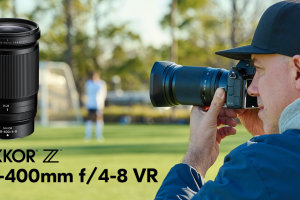Analog devices play a crucial role in the world of technology. They are electronic devices that process and transmit continuous signals, as opposed to digital devices that work with discrete signals. Analog devices are essential for converting real-world phenomena, such as sound, light, and temperature, into electrical signals that can be understood and manipulated by digital systems. In a digital age where most of our technology is based on binary code and discrete values, understanding analog devices is of utmost importance.
In today’s digital world, it is easy to overlook the significance of analog devices. However, without them, many of the technologies we rely on would not exist. Analog devices serve as the foundation for modern technology by providing the means to capture and process real-world data. They enable us to convert physical phenomena into digital information that can be analyzed, stored, and transmitted. Without analog devices, we would not have smartphones, digital cameras, or even the internet.
Analog Devices: The Foundation of Modern Technology
Analog devices are the building blocks of modern technology. They are present in almost every aspect of our daily lives, often working behind the scenes to make our lives easier and more convenient. For example, when we listen to music on our smartphones or watch videos on our televisions, analog devices are responsible for converting the electrical signals into sound and images that we can perceive.
Analog devices are also found in medical equipment, such as heart rate monitors and blood pressure monitors. These devices rely on analog sensors to measure physiological parameters and convert them into electrical signals that can be analyzed by healthcare professionals. Without analog devices, medical diagnosis and treatment would be much more challenging.
The Evolution of Analog Devices: From Basic Circuits to Complex Systems
The history of analog devices dates back to the early days of electronics. In the late 19th century, inventors like Thomas Edison and Nikola Tesla were experimenting with basic analog circuits to transmit and manipulate electrical signals. These early analog devices laid the foundation for the development of more complex systems in the 20th century.
Over time, analog devices have evolved to become more sophisticated and capable. The invention of the transistor in the 1940s revolutionized the field of electronics and paved the way for the development of integrated circuits (ICs). ICs allowed for the integration of multiple analog components onto a single chip, making it possible to create smaller, more efficient devices.
Today, analog devices are not limited to simple circuits. They can be found in complex systems such as microprocessors, sensors, and communication devices. These advancements have enabled the development of technologies like artificial intelligence, virtual reality, and autonomous vehicles.
Analog Devices in the Digital Age: Bridging the Gap between the Physical and Digital Worlds
In a digital age where most of our technology is based on binary code and discrete values, analog devices play a crucial role in bridging the gap between the physical and digital worlds. They enable us to interface with the real world by converting continuous signals into digital information that can be processed by computers.
One example of how analog devices bridge the gap between the physical and digital worlds is through touchscreens. When we touch a touchscreen device, such as a smartphone or tablet, analog sensors detect the pressure and position of our fingers and convert them into digital signals that can be interpreted by the device’s software. This allows us to interact with digital content using natural gestures.
Analog devices are also used in digital cameras to capture images. The image sensor in a digital camera is an analog device that converts light into electrical signals. These signals are then processed by digital circuits to produce a digital image that can be stored and manipulated.
The Role of Analog Devices in IoT and Smart Systems
Analog devices play a crucial role in the Internet of Things (IoT) and smart systems. IoT refers to the network of physical devices, vehicles, appliances, and other objects embedded with sensors, software, and connectivity that enables them to collect and exchange data. Analog devices are used in IoT devices to sense and measure physical phenomena, such as temperature, humidity, and motion.
For example, in a smart home system, analog sensors can be used to monitor the temperature and humidity levels in different rooms. This information can then be used to adjust the heating and cooling systems to maintain a comfortable environment. Analog devices are also used in smart energy meters to measure electricity consumption and optimize energy usage.
Analog Devices in Healthcare: Advancements in Medical Technology

Analog devices have revolutionized the field of healthcare by enabling advancements in medical technology. They are used in a wide range of medical devices, from diagnostic tools to implantable devices.
One example of how analog devices are used in healthcare is in electrocardiography (ECG) machines. ECG machines measure the electrical activity of the heart and convert it into a graphical representation that can be analyzed by healthcare professionals. Analog devices are used to amplify and filter the electrical signals from the heart to ensure accurate measurements.
Analog devices are also used in medical imaging technologies such as X-ray machines and magnetic resonance imaging (MRI) scanners. These devices rely on analog sensors to capture images of the human body and convert them into digital signals that can be processed and analyzed.
Analog Devices in Automotive Industry: Enhancing Safety and Performance
Analog devices play a crucial role in the automotive industry by enhancing safety and performance. They are used in various systems within a vehicle, including the engine control unit (ECU), anti-lock braking system (ABS), and airbag control unit.
In the ECU, analog devices are used to monitor various parameters such as engine speed, temperature, and fuel consumption. This information is then used to optimize the performance of the engine and ensure efficient fuel usage.
Analog devices are also used in ABS systems to measure wheel speed and detect when a wheel is about to lock up during braking. This information is used to modulate the braking pressure on each wheel, preventing skidding and improving vehicle stability.
Analog Devices in Aerospace and Defense: Advancements in Military Technology
Analog devices have played a crucial role in the advancement of military technology. They are used in various aerospace and defense systems, including radar systems, communication systems, and guidance systems.
Radar systems rely on analog devices to transmit and receive radio waves and detect objects in the surrounding environment. Analog devices are used to amplify and process the received signals, allowing for accurate detection and tracking of targets.
Analog devices are also used in communication systems to transmit and receive signals over long distances. They are used in satellite communication systems, military radios, and other communication devices used by the military.
Future of Analog Devices: The Next Generation of Innovation and Advancements
The future of analog devices holds endless possibilities for innovation and advancements. As technology continues to evolve, analog devices will play a crucial role in enabling new applications and capabilities.
One area where analog devices are expected to make significant advancements is in the field of artificial intelligence (AI). AI relies on vast amounts of data to learn and make decisions. Analog devices can be used to capture and process real-world data, enabling AI systems to interact with the physical world more effectively.
Another area where analog devices are expected to advance is in the field of renewable energy. Analog devices can be used to capture and convert energy from renewable sources such as solar and wind into usable electrical power. These advancements will help reduce our dependence on fossil fuels and mitigate the impact of climate change.
The Endless Possibilities of Analog Devices in Revolutionizing the Future of Technology
In conclusion, analog devices play a crucial role in technology by converting real-world phenomena into electrical signals that can be understood and manipulated by digital systems. They are the foundation of modern technology and are present in almost every aspect of our daily lives.
Analog devices bridge the gap between the physical and digital worlds, enabling us to interface with technology in a natural and intuitive way. They are used in a wide range of applications, from healthcare and automotive to aerospace and defense.
The future of analog devices holds endless possibilities for innovation and advancements. As technology continues to evolve, analog devices will continue to play a crucial role in revolutionizing the future of technology. From AI to renewable energy, analog devices will enable new applications and capabilities that will shape the world we live in.
















Add Comment